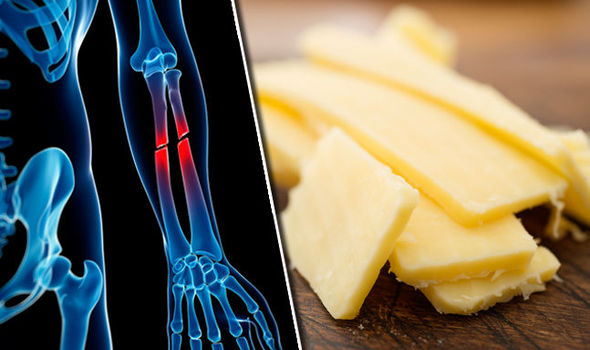The Best Cheese for Bone Health: What Nutrition Experts Recommend

Strong bones start on the plate. For many people, cheese is one of the easiest, most delicious ways to build bone-supporting nutrients into everyday meals. Packed with calcium, high-quality protein, and — depending on the variety — phosphorus, vitamin A, and even vitamin D (in some fortified products), cheese can be a bone-friendly food when chosen and eaten thoughtfully.
Below we explain what to look for, which cheeses nutrition experts most often recommend, how to add them into your diet, portion guidance, and who should be cautious. This practical, evidence-informed guide will help you pick cheeses that support bone health without wrecking other goals like blood pressure, weight, or kidney function.
Why cheese helps bones (the basics)
Bones are made mostly of minerals and protein. To build and maintain them you need:
- Calcium — the primary mineral in bones.
- Protein — collagen and other structural proteins need amino acids.
- Phosphorus — another bone mineral that works with calcium.
- Vitamin D — needed to absorb calcium efficiently.
- Other nutrients — magnesium, vitamin K, zinc and more play supporting roles.
Cheese contributes mainly calcium and high-quality protein; many cheeses are also a source of phosphorus and vitamin A. Some dairy products are fortified with vitamin D, and eating cheese alongside vitamin D sources (fatty fish, fortified milk, sun exposure) improves calcium absorption. In short, cheese is a nutrient-dense, convenient way to help meet bone-building needs.
What nutrition experts look for in a bone-healthy cheese
When dietitians and nutrition scientists recommend cheeses for bone health they usually consider a few practical criteria:
- Calcium content per serving. More calcium per ounce means you’ll reach your target with less added calories.
- Protein quality and amount. Cheese provides complete protein, which helps bone matrix and muscle maintenance — important because muscle supports bone strength.
- Sodium and saturated fat. Many cheeses are high in salt and fat; experts balance bone benefits with cardiovascular and blood pressure concerns.
- Bioavailability. Calcium and phosphorus in cheese are generally well absorbed compared with some plant sources.
- Digestibility and tolerability. For lactose-sensitive people, aged cheeses and some fermented varieties have less lactose and cause fewer symptoms.
- Versatility. Cheeses that are easy to use in meals increase the chances people will eat them consistently.
Taking that into account, here’s a practical list of cheeses nutrition experts commonly recommend for bone health.
Top cheeses for bone health (what to buy)
1. Parmesan (Parmigiano-Reggiano)
Parmesan is a superstar for calcium density. A small ounce delivers a large amount of calcium, which makes it efficient for meeting daily needs. It’s also aged, low in lactose, and intensely flavored — so a little goes a long way. Use grated Parmesan on salads, soups, vegetables, and pasta to boost bone-supporting calories without eating large quantities.
2. Gruyère and other Swiss-style cheeses (Emmental, Comté)
Swiss-type cheeses are rich in calcium and protein while typically being lower in sodium than some processed cheeses. Their melting quality makes them excellent in hot dishes — think gratins, baked eggs, or a simple grilled cheese with whole-grain bread.
3. Cheddar
Cheddar is widely available, has a good calcium-to-calorie ratio, and comes in aged varieties with reduced lactose. It’s versatile (snacking, sandwiches, cooking) and is often better tolerated than fresh dairy for those mildly lactose intolerant.
4. Cottage cheese
Cottage cheese is lower in fat and very high in protein, making it valuable for both bone and muscle health. While its calcium content per serving is lower than hard cheeses ounce-for-ounce, the combination of high protein and low-calorie density makes it a favorite for people trying to maintain muscle mass while managing weight.
5. Ricotta
Made from whey, ricotta is higher in some essential amino acids and offers a creamy, gentle flavor that’s easy to use in both sweet and savory dishes. It supplies calcium and protein with a softer texture, good for spreading or mixing into recipes.
6. Feta (in moderation)
Feta provides calcium and has the advantage of being a tangy, flavorful accent — so you can use less and still get taste. Note that traditional feta is higher in sodium, so keep portions mindful if you’re watching blood pressure.
7. Mozzarella (part-skim)
Fresh part-skim mozzarella has a reasonable protein and calcium balance and is lower in saturated fat than many hard cheeses. It’s excellent for salads, pizzas made at home, and melting on vegetables.
How much cheese counts as a serving?
A typical cheese serving sizes experts use are:
- Hard cheese (Parmesan, Cheddar, Gruyère): 1 ounce (about the size of a pair of dice or a small wedge)
- Soft or fresh cheese (cottage, ricotta, cream cheese): 1/2 cup
- Sliced or shredded cheese: about 1 ounce (a generous handful of shredded)
Because hard cheeses pack a lot of calcium into a small space, experts often recommend using a modest portion of a calcium-dense cheese (like Parmesan) to boost intake without excessive calories or sodium. If you rely on softer cheeses like cottage or ricotta, aim for the 1/2 cup portion size to get meaningful protein and calcium.
Pairing cheese with vitamin D and other bone-supporting habits
Cheese alone isn’t the whole story. Nutrition experts emphasize combining cheese with vitamin D sources and lifestyle habits that support bone health:
- Pair with vitamin D-rich foods (fatty fish such as salmon, fortified milk, egg yolks) or moderate sun exposure to aid calcium absorption.
- Include lean protein and resistance exercise — muscle supports bone by applying healthy loads that stimulate bone remodeling.
- Eat foods rich in magnesium and vitamin K (leafy greens, nuts, seeds) which help bone structure.
- Limit excess sodium and caffeine when possible — very high salt intake can increase calcium excretion.
- Avoid smoking and excessive alcohol — both harm bone health.
Ways to add bone-friendly cheese to everyday meals
- Sprinkle grated Parmesan on roasted vegetables, soups, or a grain bowl.
- Stir ricotta into pancakes or oatmeal for a calcium and protein boost at breakfast.
- Top a salad with cubes of part-skim mozzarella or crumbled feta — use more veggies and less cheese if sodium is a concern.
- Mix cottage cheese with fruit for a high-protein snack, or use it as the base for a savory dip with herbs.
- Make a simple cheesy omelet with aged cheddar or Gruyère for breakfast — eggs add vitamin D too.
- Use thin shavings of aged cheese on crackers with smoked salmon for a bone-supporting appetizer.
These ideas help integrate cheese across meals without relying on a single heavy portion at one sitting.
Special considerations and who should be careful
People with high blood pressure
Many cheeses are high in sodium. If you have hypertension, prioritize lower-sodium varieties (look for reduced-sodium labels), use strong-flavored aged cheeses sparingly (a little provides a lot of taste), and offset with plenty of potassium-rich produce.
People watching saturated fat or calories
Full-fat cheeses are calorie-dense. If weight or heart disease risk is a concern, choose part-skim versions (e.g., part-skim mozzarella, low-fat cottage cheese) and pay attention to portion sizes.
People with kidney disease
Kidneys affect mineral balance (phosphorus especially). Some cheeses are high in phosphorus and sodium; people with chronic kidney disease should follow dietary guidance from their nephrology team and often limit certain cheeses.
Lactose-intolerant individuals
Aged cheeses (Parmesan, Cheddar, Gruyère) and many fermented cheeses have very low lactose and are often tolerated in small amounts. Fresh cheeses (cottage, ricotta) contain more lactose but can sometimes be consumed with lactase supplements or in small portions.
Those avoiding dairy (vegan)
Plant-based cheeses generally provide minimal calcium unless fortified. If you avoid dairy, look for fortified plant milks, leafy greens, tofu set with calcium, and supplements if needed.
Practical shopping tips
- Read labels for calcium per serving when available. Some brands list calcium content on nutrition panels.
- Choose aged cheeses for lower lactose and concentrated calcium; they also pack intense flavor so you can use less.
- Opt for part-skim or low-fat varieties when concerned about saturated fat — but remember that fat helps absorb fat-soluble vitamins (A and D), so balance is key.
- Check sodium if blood pressure is a concern; try rinsing crumbly cheeses (feta) to remove surface salt or choose reduced-sodium options.
- Buy whole blocks and grate yourself to avoid additives in pre-shredded cheeses (which often contain anti-caking salts).
Quick meal ideas that prioritize bones
- Breakfast: Scrambled eggs with a sprinkle of Parmesan and a side of sautéed spinach.
- Lunch: Spinach salad with cherry tomatoes, cucumber, a few slices of part-skim mozzarella, and canned salmon flakes.
- Snack: Cottage cheese with sliced peaches and a sprinkle of chia seeds.
- Dinner: Baked cod or salmon with a Parmesan crust and a side of roasted Brussels sprouts.
- Treat: Ricotta mixed with a touch of honey and lemon zest on whole-grain toast.
How much calcium do you need? (Quick reference)
Recommended calcium varies by age and sex, but general adult guidelines often fall in the range of 1,000–1,300 mg/day depending on life stage. Since one ounce of many hard cheeses can provide roughly 150–350 mg of calcium (varies by cheese), including cheese daily can make a meaningful contribution — but it should be paired with other calcium sources like low-fat dairy, fortified foods, and leafy greens to reach total needs.
Bottom line: pick nutrient-dense cheeses, watch portions, and pair wisely
Cheese can be a valuable and enjoyable part of a bone-healthy diet. Nutrition experts commonly point to calcium-dense, aged cheeses (Parmesan, Gruyère, Cheddar) for efficiency; cottage and ricotta for protein-rich options; and part-skim mozzarella for a lower-fat melting cheese. The smartest approach is to prioritize nutrient density, portion control, and pairing cheese with vitamin D sources and exercise.




